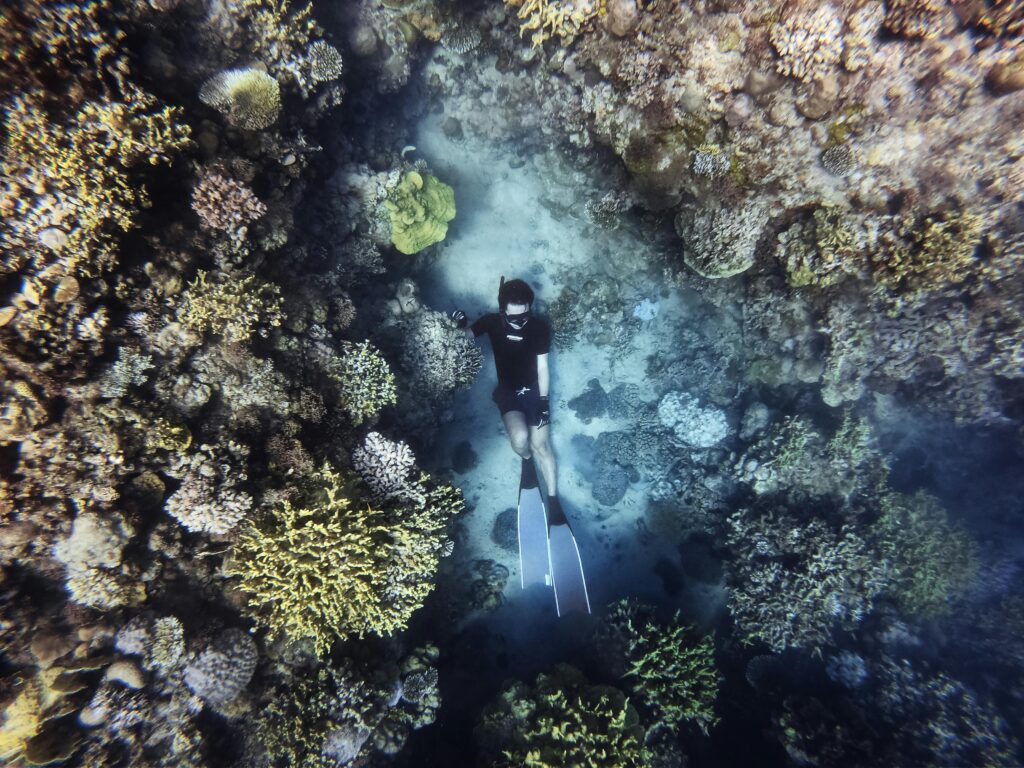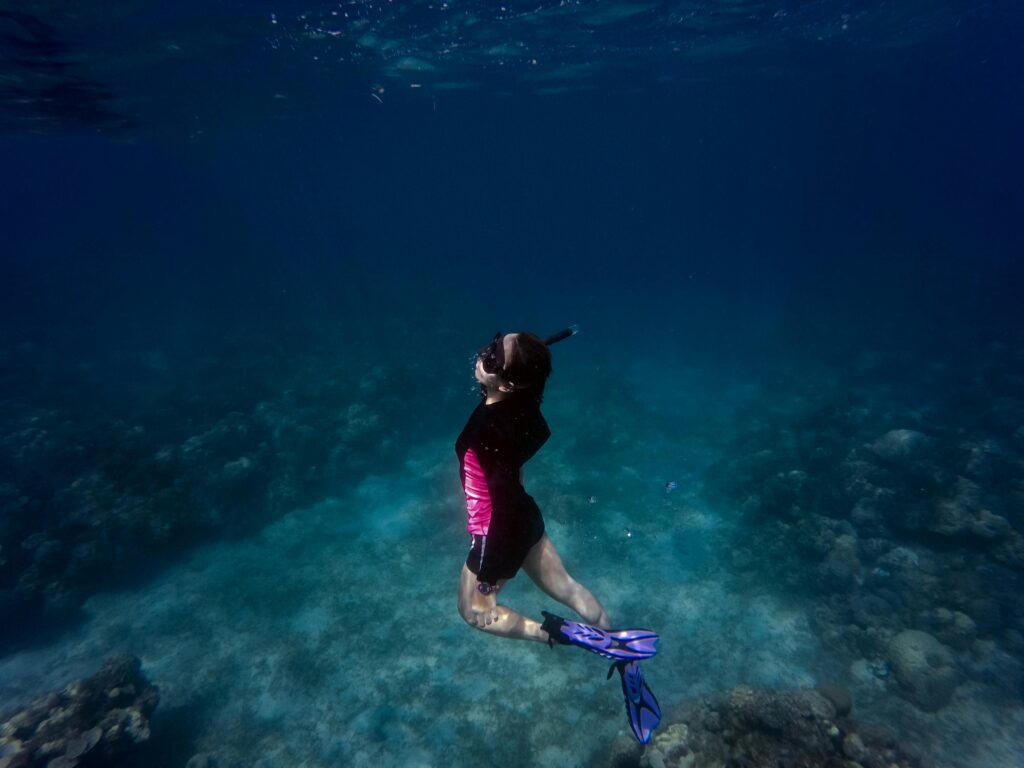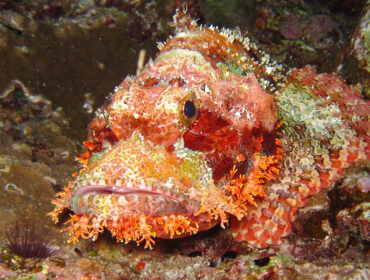The ocean’s mesmerizing blue hue has fascinated humans like us for centuries. But how or why is the ocean blue? Is it the sky’s reflection or something more scientific? For divers, knowing the answer is more than just a lil trivia—it’s a fascinating swim into ocean optics, visibility, and underwater beauty. Let’s break it down and answer this FAQ.
If water is clear, why is the ocean blue?
Because water absorbs colors in the red part of the light spectrum and reflects and scatters colors in the blue spectrum. This is a science called light absorption. In simpler terms, when sunlight hits the ocean, most of the longer wavelengths (reds, oranges, and yellows) are absorbed quickly. So, what’s left for the shorter blue wavelengths to do is scatter and dominate what we see.
For scuba divers, this is especially noticeable as you descend. Deeper water filters out light more intensely. So, everything has a cool blue ambiance. This also explains why your vibrant red dive knife looks grayish-brown at depth. It’s because reds are absorbed within the first 15-20 feet!
Light scattering

Scattering also plays a key role. When sunlight enters the water, the shorter blue wavelengths bounce off water molecules and tiny particles more efficiently than longer wavelengths. This scattering enhances the blue effect, giving the ocean its characteristic sparkle.
Interestingly, the presence of microscopic organisms, like phytoplankton, can alter this perception. The water might take on a greener or even murkier hue in areas rich with nutrients, where these organisms thrive. Divers often notice this change in places known for plankton blooms, like Raja Ampat or the Great Barrier Reef.
Scattering amplifies the blue effect in open ocean waters with fewer suspended particles. This pure blue clarity is part of the allure for divers exploring deeper wrecks or remote reefs. And it’s one more reason why blue-water dives are so sought after.
Light penetration
The ocean’s blue hue isn’t just about color — it’s also about depth. Light penetration diminishes as you go deeper, with the ocean acting like a natural filter. Here’s a quick breakdown that hopefully will help you understand quickly:
- Shallow waters (0-10 meters): Bright blues dominate. The presence of colorful coral reefs adds vibrancy.
- Mid-depths (10-30 meters): Blues deepen, and warmer colors vanish. Divers may notice that their red dive gear looks brown or black.
- Deeper waters (30+ meters): Blues darken further, eventually transitioning into near-total darkness.
That little list will help diver-photographers plan their underwater photography better, but also, it’s great for navigation and safety. That’s why many divers carry torches even during daytime dives.
Hmm. Why are all oceans not the same shade of blue?

Not all oceans (or even the same ocean sometimes) are equally blue. The factors that affect an ocean’s blueness are water depth, the angle of the sun, and the presence of sediment or biological activity. Coastal areas may appear greenish due to sand and organic materials. Meanwhile, the open sea boasts richer blues due to minimal interference.
Scuba divers seeking crystal-clear, sapphire-blue waters often head to destinations like the Maldives, Hawaii, or the Red Sea. Conversely, divers exploring kelp forests or nutrient-rich waters, such as those off California, encounter greener hues due to higher productivity.
FAQs: Why is the ocean blue?
Yep, water has a slight natural blue tint because it absorbs red light. But you’d need a whole lot of it to see that—it’s not showing up in your glass!
The sky’s blue because sunlight scatters through tiny molecules in the atmosphere, and blue light scatters best. So, basically, the sky’s showing off its best wavelength.
Rivers carry dissolved salts from rocks and dump them into the ocean, which has been collecting for billions of years.
Nope! The ocean’s blue because of how water absorbs and scatters light. But on a sunny day, the sky gives it a little extra flair.
Because all the fish go blu-blu-blu!
The ocean looks blue because it loves keeping blue light and lets the other colors sink.
Now you know why the ocean is blue!

Understanding why the ocean is blue not only explains why your photos turn out so blue but also guides equipment choices, like color filters and lights. You could dive into a nutrient-rich kelp forest or explore the vibrant depths of an atoll; knowing why the ocean is blue adds an extra layer of wonder to the experience.
So, next time you’re donning your gear and preparing for a dive, take a moment to appreciate the science around you. The ocean isn’t just blue — it’s a masterpiece of light, life, and adventure.





